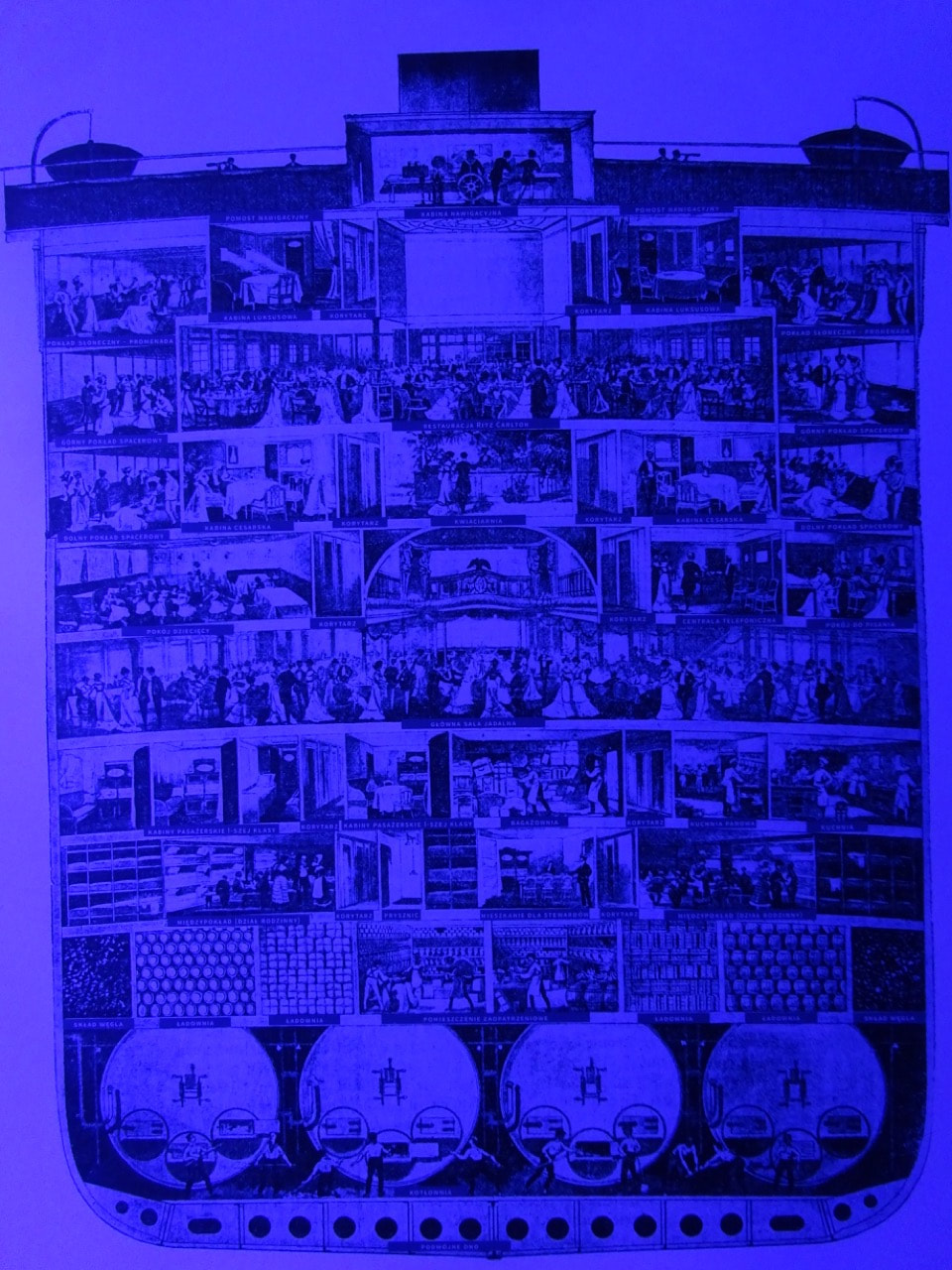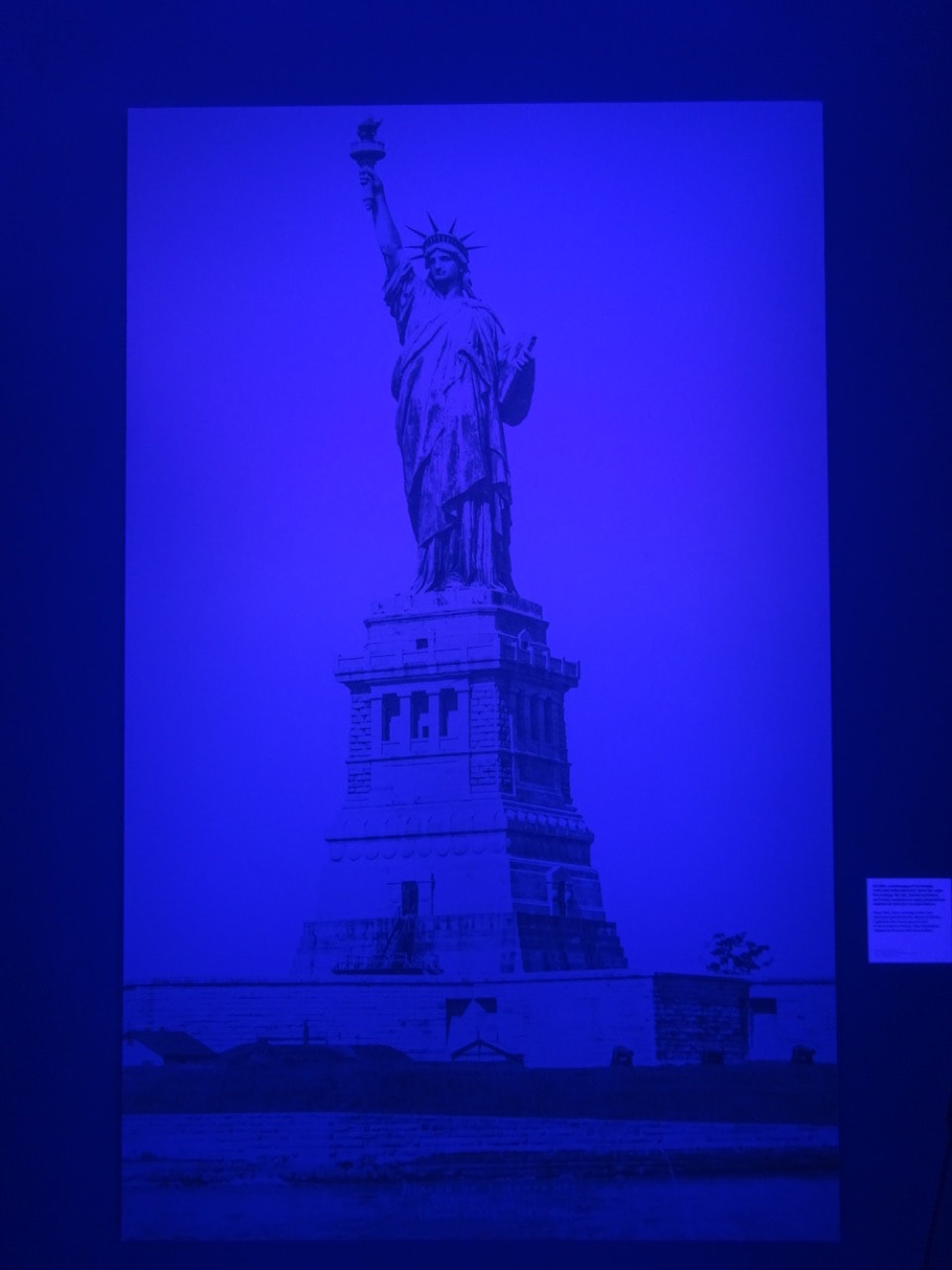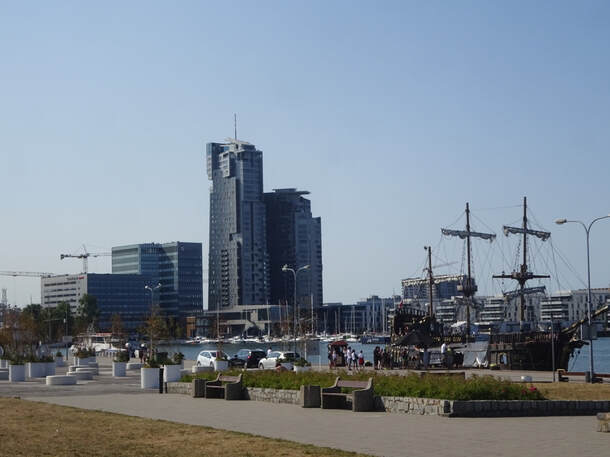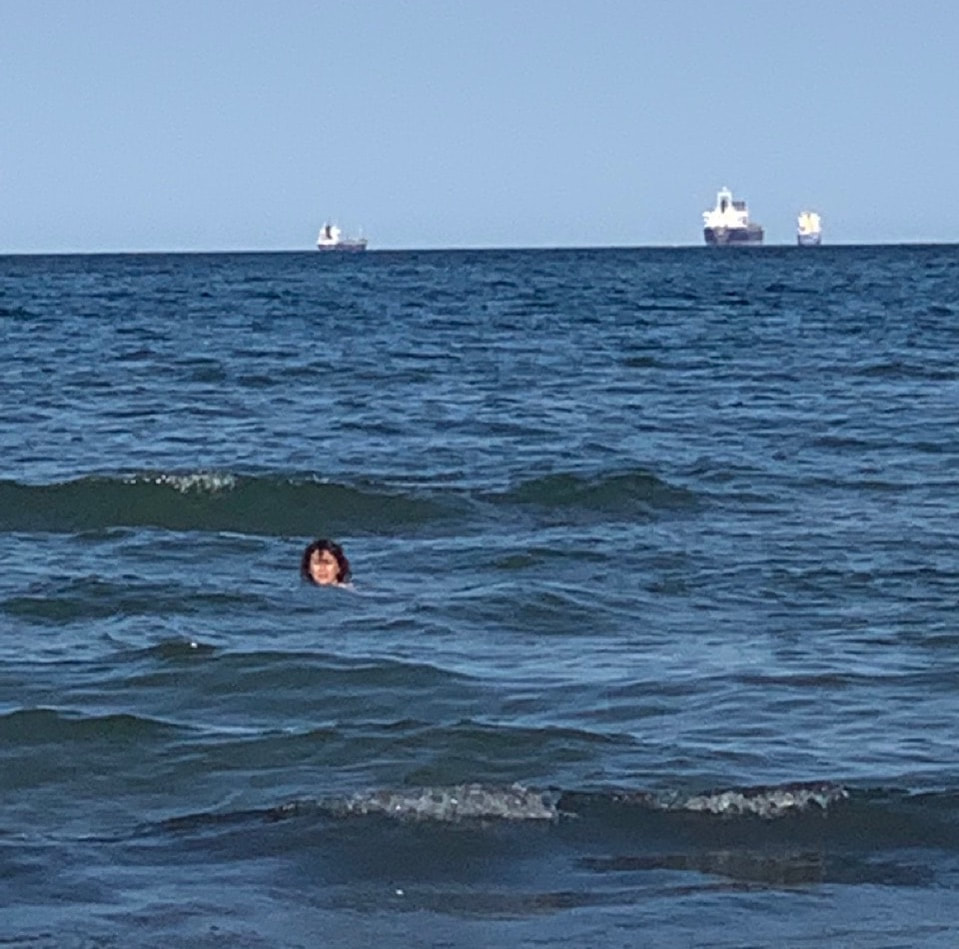We drove a short distance north to the port city of Gdynia, and began with a tour of the Museum of Emigration.
From a balcony of the museum, we were treated to fine views of the busy port.
It's a very modern and thoughtfully presented museum detailing the history of mostly Poles and other Europeans leaving out through Poland, and a bit on people emigrating into Poland.
They had work stations where people can trace their own ancestors through free access to international genealogy sources. Gerri checked out records of some of her people (more to follow below), who may have emigrated to America through the wharfs and channels just outside this building.
There was a storyline of a fictional family, a composite of realistic experiences, that guided museum goers through emigration realities around the turn of the 19th century.
Here recent emigrants arrive and settle into the hustle and bustle of early 20th century New York City.
After WWII and before the fall of Communism, some Poles were prompted to emigrate to lives abroad that allowed them to live more flourishing lives. We don't know the story of these ladies, but perhaps they're reminiscing over these photos from the oppressive times of Communism, between 1945 and 1989.
Some snippets of Gerri's genealogy of people emigrating from Poland and Germany (just before the madness of Nazism), with parental lineage to also Russia and Austria.
After the awesome visit to the museum, we took a long walk over to another wharf/pier that provided many sights to see.
First up, lunch is served, a simple Polish port-city meal.
Three Masts monument in memory of people who died at sea, created by Wawrzyniec Samp in 1980.
Gerri says "na-nu na-nu".
This seemingly vintage vessel is a modern diesel-powered tourist conveyance.
The Dar Pomorza (in English: "Gift of Pomerania") is a Polish full-rigged sailing ship built in 1909, which is preserved in Gdynia as a museum ship. Surviving both storms and two major wars, she has served as a sail training ship in Germany, France, and Poland.
ORP Błyskawica (Lightning) is a Grom-class destroyer which served in the Polish Navy during World War II. It is the only Polish Navy ship to have been decorated with the Virtuti Militari, Poland's highest military order for gallantry, and in 2012 was given the Pro Memoria Medal. Błyskawica is preserved as a museum ship in Gdynia and is the oldest preserved destroyer in the world.
During the war, she logged 146,000 nautical miles and escorted 83 convoys. In combat, she damaged three U-boats, helped sink other ships, and shot down at least four aircraft. In late 1945 and early 1946 Błyskawica, along with the destroyer Onslow, took part in Operation Deadlight, the scuttling of over 100 German U-boats.
During the war, she logged 146,000 nautical miles and escorted 83 convoys. In combat, she damaged three U-boats, helped sink other ships, and shot down at least four aircraft. In late 1945 and early 1946 Błyskawica, along with the destroyer Onslow, took part in Operation Deadlight, the scuttling of over 100 German U-boats.
On the road to Spot, we see Gdańsk City Stadium, from 2011, and used mostly for soccer.
Now in Sopot for a visit to the beach, where Gerri takes her obligatory dip in the Baltic Sea.
We then moved onto Westerplatte, a peninsula in Gdańsk, known for the Battle of Westerplatte. This battle was the first clash between Polish and German forces during the invasion of Poland, and thus the beginning and the first battle of World War II.
Ruins of Westerplatte barracks:
The Westerplatte Monument, also known as the Monument to the Defenders of the Coast, constructed between 1964–1966 to commemorate the Polish defenders of the Military Transit Depot in the Battle of Westerplatte.









































 RSS Feed
RSS Feed
